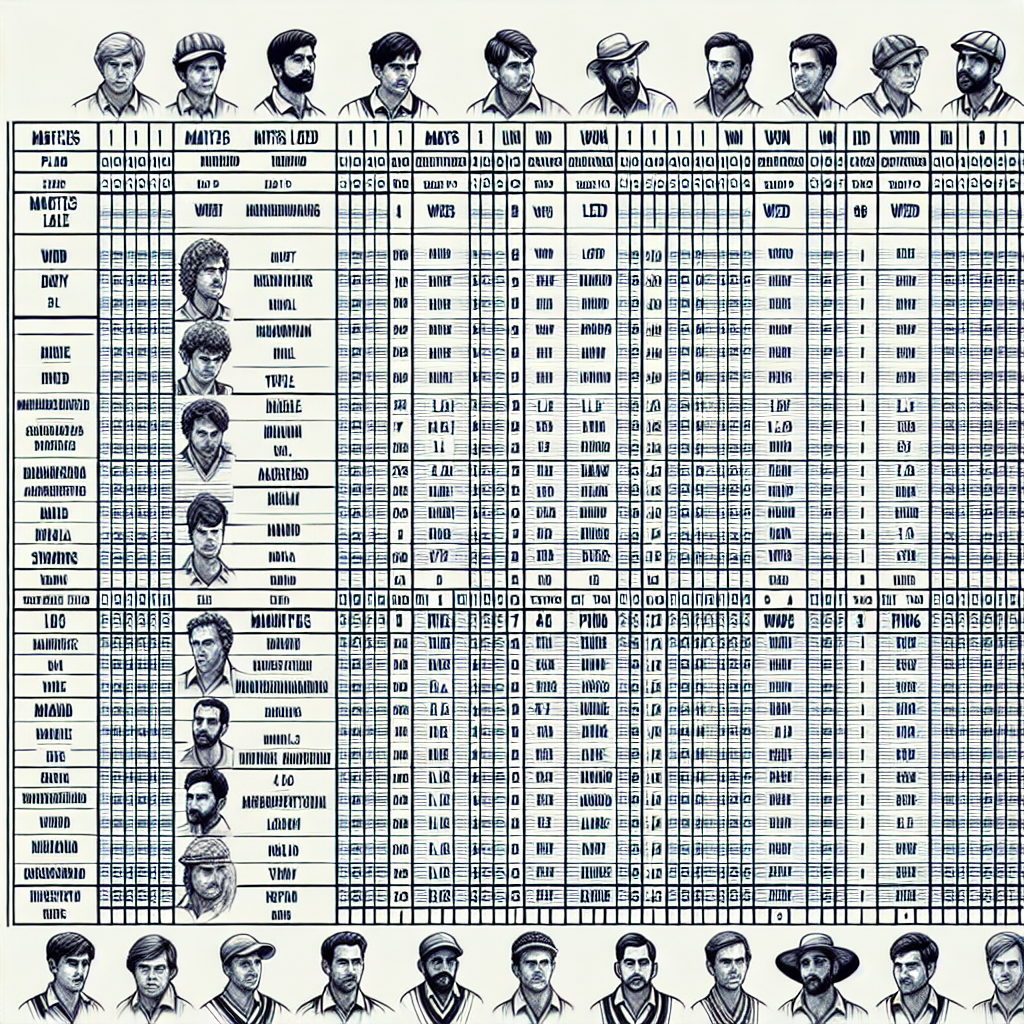
Cricket, often referred to as a gentleman's game, is not just about the bat and ball. It's a sport that thrives on strategy, skill, and statistics. One of the most crucial elements in the world of cricket is the score point table, which serves as a barometer for a team's performance in a tournament. This article delves into the intricacies of the cricket score point table, exploring its significance, structure, and impact on the game.
The Importance of the Cricket Score Point Table
The cricket score point table is a vital component of any cricket tournament. It provides a snapshot of how teams are performing relative to each other. This table is not just a record of wins and losses; it is a comprehensive tool that reflects a team's consistency, strength, and potential to progress in the tournament.
- Performance Tracking: The point table helps in tracking the performance of teams throughout the tournament.
- Qualification Criteria: It determines which teams qualify for the next stage of the competition.
- Fan Engagement: Fans closely follow the point table to gauge their favorite team's chances of advancing.
Structure of the Cricket Score Point Table
The structure of a cricket score point table can vary depending on the format of the tournament, whether it's a league, knockout, or round-robin format. However, certain elements remain consistent across all formats.
Key Components of the Point Table
- Matches Played (P): The total number of matches a team has played.
- Wins (W): The number of matches a team has won.
- Losses (L): The number of matches a team has lost.
- Ties (T): The number of matches that ended in a tie.
- No Result (NR): Matches that did not produce a result due to weather or other interruptions.
- Points (Pts): The total points a team has earned, usually awarded as two points for a win and one for a tie or no result.
- Net Run Rate (NRR): A calculation used to break ties between teams with equal points, based on the rate at which teams score runs and concede runs.
How Points are Awarded
The allocation of points in a cricket tournament is straightforward but can vary slightly depending on the specific rules of the competition. Generally, the following system is used:
- Win: 2 points
- Tie/No Result: 1 point
- Loss: 0 points
In some tournaments, bonus points may be awarded for achieving certain milestones, such as winning by a large margin or scoring a high number of runs.
Case Study: The Indian Premier League (IPL) Point Table
The Indian Premier League (IPL) is one of the most popular cricket tournaments globally, and its point table is closely followed by millions of fans. Let's take a closer look at how the IPL point table functions and its impact on the tournament.
IPL Point Table Structure
The IPL follows a double round-robin format, where each team plays every other team twice. The point table is crucial in determining which teams advance to the playoffs.
- Top Four Teams: The top four teams in the point table qualify for the playoffs.
- Net Run Rate: In case of a tie in points, the net run rate is used to determine the ranking.
- Impact of NRR: Teams often strategize to improve their NRR, especially in closely contested tournaments.
Impact on Team Strategies
The point table significantly influences team strategies in the IPL. Teams not only aim to win matches but also focus on improving their net run rate. This can lead to aggressive batting or strategic declarations in matches where the outcome is almost certain.
Statistics and Trends in Cricket Point Tables
Analyzing cricket point tables over the years reveals interesting trends and statistics that highlight the competitive nature of the sport.
Historical Trends
- Consistency is Key: Teams that consistently perform well in the league stages often have a higher chance of winning the tournament.
- Importance of NRR: Several teams have missed out on playoff spots due to inferior net run rates, despite having the same number of points as their competitors.
- Upsets and Surprises: Lower-ranked teams occasionally upset higher-ranked teams, impacting the point table dynamics significantly.
Statistical Insights
Statistics from past tournaments can provide valuable insights into team performances and strategies:
- Average Points for Qualification: Historically, teams need an average of 14-16 points to qualify for the playoffs in a typical 8-team tournament.
- Impact of Home Advantage: Teams often perform better at home, which can influence their position in the point table.
- Role of Weather: Matches affected by weather can lead to no results, impacting the point distribution and team standings.
Conclusion: The Significance of the Cricket Score Point Table
The cricket score point table is more than just a record of wins and losses; it is a dynamic tool that reflects the competitive spirit of the game. It influences team strategies, fan engagement, and ultimately, the outcome of the tournament. Understanding the intricacies of the point table allows fans and analysts to appreciate the nuances of cricket and the strategic depth involved in the sport.
As cricket continues to evolve, the point table will remain a central element in the narrative of the game, providing a clear and concise measure of team performance and potential. Whether you're a casual fan or a seasoned analyst, keeping an eye on the point table is essential to fully grasp the unfolding drama of any cricket tournament.





